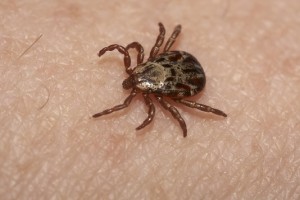
HYANNIS – As people start to go outside more with the weather warming up and COVID-19 restrictions loosening, the number of cases of Lyme disease in New England have increased substantially.
Weather conditions have a big effect on the tick population, and years that are more humid with more rainfall generally see more cases of tick-related illness.
“Top of my list for personal for protection is using or treating clothing and footwear with a repellent that contains the active ingredient permethrin, not deet,” recommended Cape Cod Cooperative Extension Entomologist Larry Dapsis.
This year, dog ticks have been especially active in New England.
Dog ticks do not carry Lyme disease in the same way that deer ticks do, but can still cause a variety of other problems.
Unlike ticks, cicadas are a relatively harmless insect which generally only cause concern due to their appearance and loud sound.
This year is a big year for cicadas, which emerge in large broods every 17 years.
Brood 10 is very active this year in the area from New York to Missouri, hitting Georgia particularly hard.
In Massachusetts and the Cape area, “stragglers” can be spotted which, unlike other cicadas, emerge every 13 years.
It is estimated that 2025 will be the next year for a big cicada emergence in Massachusetts, as the last one was in 2008.

























